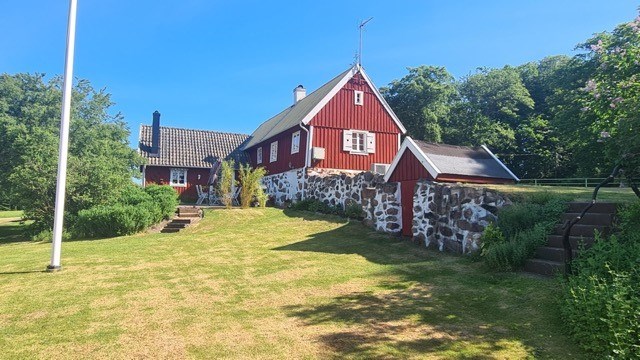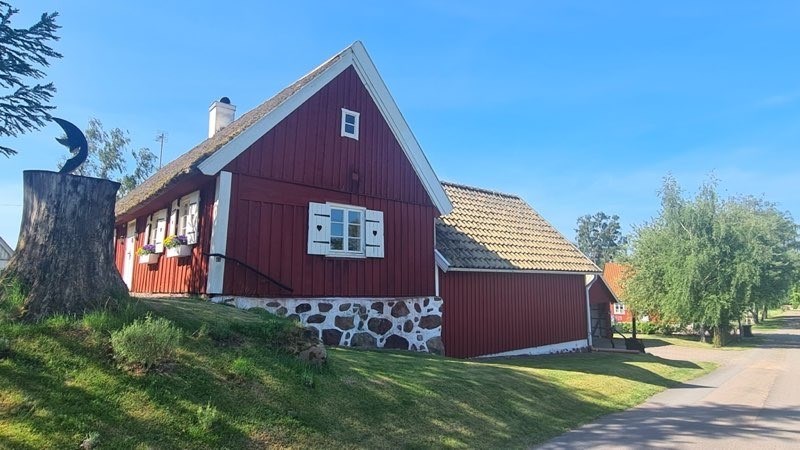Detta inlägg post publicerades ursprungligen på denna sida this site ;
Date:
Author: Alexandre Pace, PhD Candidate in Geography, Urban and Environmental Studies, Concordia University
Original article: https://theconversation.com/old-growth-forests-in-eastern-canada-show-that-the-climate-started-changing-almost-100-years-ago-253601
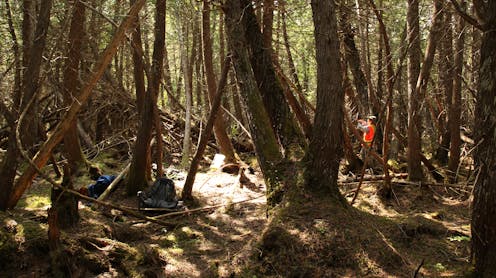
The effects of climate change are complex, especially on the water cycle. As we seek to better understand human-driven climate changes, long-term baselines for environmental data are essential.
However, records of past environmental conditions are too short to give us a robust understanding of how these systems have changed over time. One solution is to look at natural archives.
There are many natural processes that leave behind records of past environmental conditions, including tree rings.
Trees form a ring of wood every year, and the width of that ring can have a significant relationship with climate. We can then create a model based on the time period for which there is both recorded climate data and tree-ring widths. That model can be applied to the rings that formed before climate records began to reconstruct past conditions.
The challenge is to find forests with both strong climate-growth relationships and trees over a century old — substantially older than the length of climate data. This is especially difficult in southeastern Canada, where the vast majority of forests have been clear-cut.
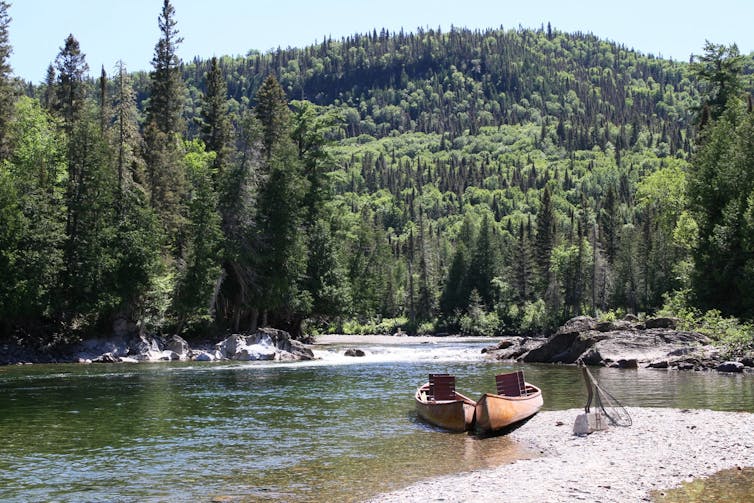
(A. Pace), CC BY
Sensitive old growth forests
In the Appalachian Mountains of the Gaspé Peninsula, Québec, we studied a rare old-growth cedar grove tucked into the valley between the base of Mont-Albert and the Sainte-Anne River, known for its Atlantic salmon fisheries.
The average hiker passing this eastern white cedar grove would probably not guess that some of these relatively small diameter cedars are more than 500 years old, an age that is still relatively young for the oldest species in eastern Canada.
The strong competition for light in this closed-canopy forest causes trees here to grow very slowly. We found they grow especially slow during years where the winter snow remained on the ground late into the spring. This late snow pack effectively shortens the trees’ growing season and leads to a thinner tree ring that same year.
We went on to sample hundreds of trees in the valley and on the slopes at sites that had never been logged. We repeatedly found a strong relationship with snow pack and a related relationship with spring river flow. With these two closely related connections, we were able to reconstruct 195 years of climate history in the region.
Modern climate change records

(A. Pace), CC BY
Our recent study reconstructed spring and early summer river flow from 1822 for the Sainte-Anne River, a major river in Gaspésie National Park, the second-largest provincial park in southern Québec.
Analysis of this tree ring/snow pack/river relationship — which was previously undocumented in eastern North America — suggests that the region was affected quite early by modern climate change. A significant shift occurred in 1937, after which individual years of extremely high river flows and high snow packs declined. Newspaper reports of floods in the greater region matched the years of high flow in our reconstruction as far back as the year 1872, further validating the results.
The reconstruction also reveals that the short river flow records for the Gaspésie mountains under-represent the region’s susceptibility to prolonged periods of drought-like conditions. Local river flow records kept since 1968 show that the region experienced an equal amount of decade-long dry springs and wet springs. However, our reconstruction suggests that during the 1822-1968 period, long bouts of dry spring climate were substantially more frequent and prolonged than wet ones.
Conservation impacts
The insights from this reconstruction could have implications for wildlife and hydropower. First, low water levels contribute to the decline of threatened Atlantic salmon populations.
Second, alpine snow pack serves as a refuge for the threatened woodland caribou populations, which used to be spread across Atlantic Canada and northern New England. Today, the caribou are in sharp decline, with less than 40 remaining south of the St. Lawrence River, all within the Gaspé Peninsula.
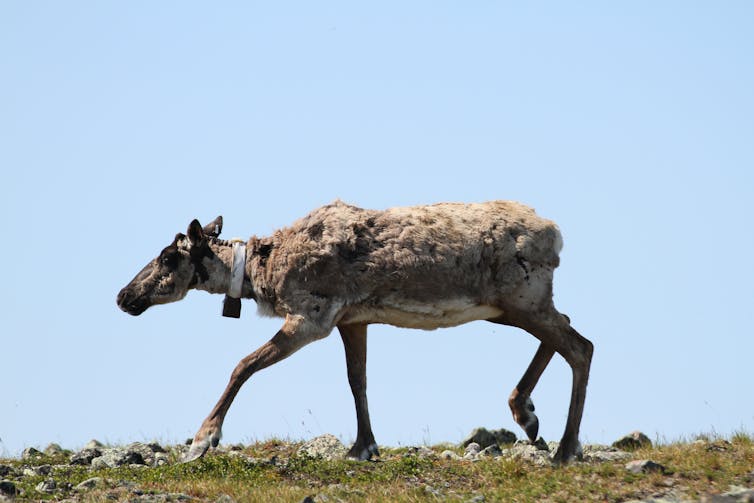
(A. Pace), CC BY
The primary threat to these caribou is the extensive clear-cutting of old-growth forest habitat. Younger forests provide less food for caribou and lead to an increased abundance of moose and deer, along with their predators — mainly coyotes and black bears — which also prey on caribou.
Changing mountain snow-pack conditions add to their peril as snow pack has important effects on the health of caribou and the ability of their calves to avoid predators.
Given this, a better understanding of the implications of reduced snow pack on caribou urgently requires further study.
Lastly, Québec’s billion-dollar hydroelectric industry might also benefit from a better understanding of past moisture in the region, with a dam complex located a few hundred kilometres northeast of our study site.
Documented histories
Our study improves our understanding of past moisture patterns across the east coast of North America. It fills a large gap in climate research based on tree rings between New York and northern Québec.
When comparing the past 200 years of these East Coast reconstructions, important climate connections arise. The comparison suggests that the complex Atlantic climate system can synchronize, leading large portions of the coast to collectively lock into periods of very wet or very dry conditions.
This is important for water resource managers, who often rely on help from other managers in neighbouring basins, which may not be available given this common synchrony.
The insights from the tree rings of these forests are another reminder of the value of old growth and the many services they provide. As we try to better understand the context of human-induced environmental change, our search continues for old forests with a story to tell.
Our ongoing research includes analyzing dead cedars preserved for almost 800 years at the bottom of lakes. The resulting tree ring chronology will extend our work with trees in the region so far, helping us further examine the environmental history of our rapidly changing planet.
![]()
Alexandre Pace receives funding from Fonds de Recherche du Québec – Nature et Technologies and the Natural Sciences and Engineering Research Council of Canada.
Jeannine-Marie St-Jacques receives funding from the Natural Sciences and Engineering Research Council.
